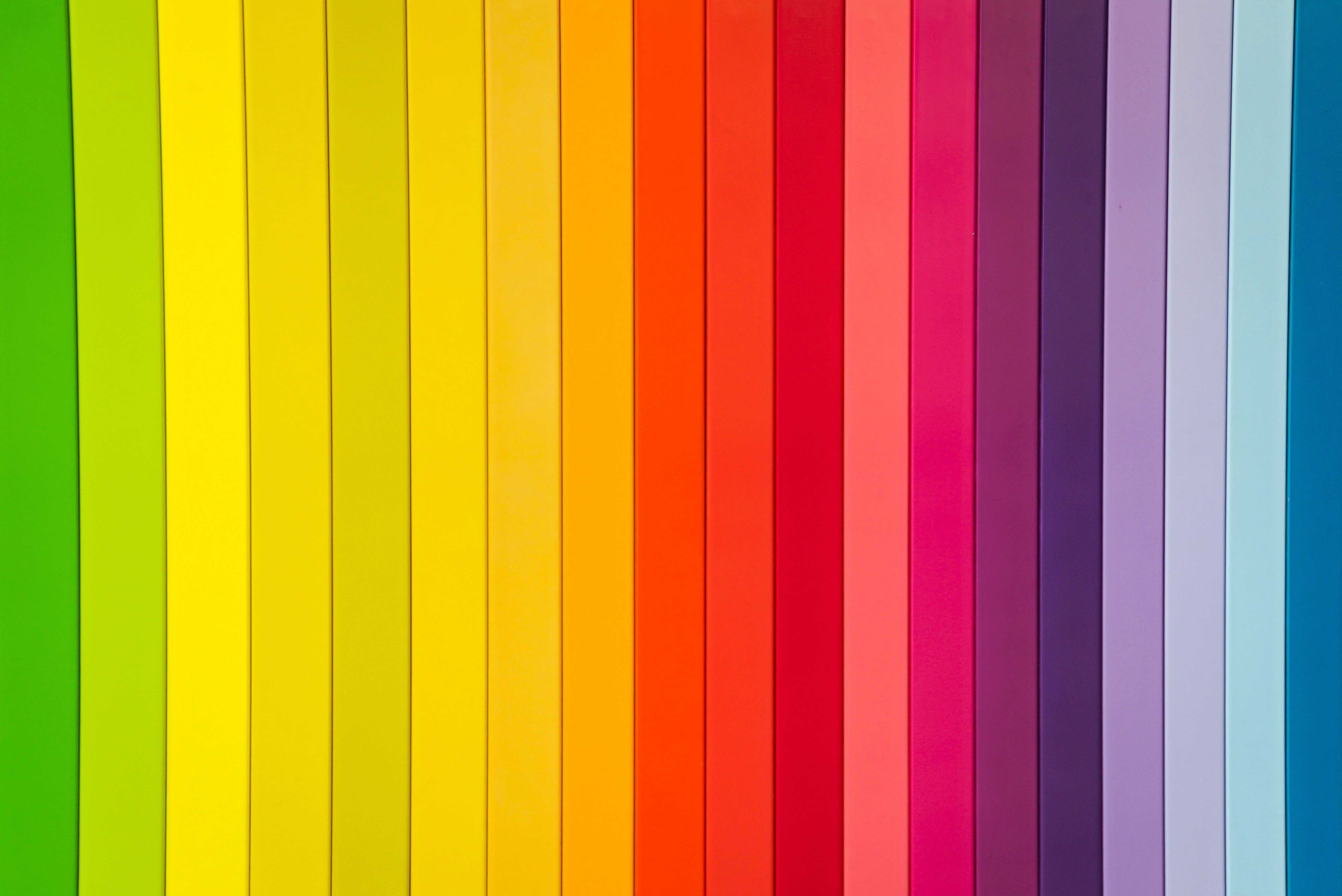Have you ever noticed how certain colors can make you feel happy or calm, while others may leave you feeling anxious or uneasy? This is no coincidence, as colors have a significant impact on our emotions and behavior. In fact, the psychology of color is a complex field that has been studied extensively by scientists, marketers, and designers. Understanding the influence of colors can help you make better decisions in your personal and professional life, and even improve your overall well-being. In this article, we will explore the fascinating world of color psychology and delve into the ways that different colors can affect our emotions and behavior.
The Science Behind the Psychology of Color Colors can have a profound impact on our mood and behavior because they activate certain areas of our brain that are associated with emotions and memories. For example, the color red has been shown to increase heart rate and blood pressure, making us feel more energized and excited. On the other hand, blue is often associated with calmness and relaxation, which can help to reduce stress and anxiety.
Researchers have also found that our responses to colors can be influenced by cultural and personal experiences. For example, in Western cultures, white is often associated with purity and innocence, while in many Eastern cultures, it is associated with death and mourning. Similarly, some people may have positive associations with the color green because it reminds them of nature, while others may have negative associations because it reminds them of sickness.
How Colors Affect Our Emotions and Behavior, Now let's take a closer look at some of the ways that different colors can affect our emotions and behavior:
Red:
As mentioned earlier, red is often associated with excitement and passion. It can also be used to convey a sense of urgency or danger, which is why it is often used in warning signs. However, too much exposure to the color red can be overwhelming and may even lead to aggression or anxiety.
Blue:
Blue is a calming color that is often associated with the ocean and the sky. It has been shown to reduce stress and promote feelings of relaxation. Blue is also associated with trust and loyalty, which is why it is often used in business logos and branding.
Yellow:
Yellow is a bright and cheerful color that is associated with happiness and optimism. It is often used in marketing to grab people's attention and to create a sense of excitement. However, too much exposure to yellow can be overwhelming and may even cause feelings of anxiety or frustration.
Green:
Green is a soothing color that is associated with nature and growth. It has been shown to reduce stress and promote feelings of calmness and harmony. Green is also associated with wealth and prosperity, which is why it is often used in financial branding.
Purple:
Purple is a royal color that is often associated with luxury and sophistication. It is also associated with creativity and imagination. However, too much exposure to purple can be overwhelming and may even lead to feelings of frustration or confusion.
Black:
Black is often associated with power, sophistication, and elegance. It can also convey a sense of mystery or drama. However, too much black can create a feeling of heaviness or sadness, which is why it is often used in moderation in design.
White:
White is often associated with purity, innocence, and cleanliness. It is often used to convey a sense of simplicity and minimalism. However, too much white can create a feeling of emptiness or blandness, which is why it is often used in combination with other colors.
Orange:
Orange is a bright and energetic color that is associated with excitement and enthusiasm. It is often used to create a sense of playfulness or fun. However, too much orange can create a feeling of restlessness or anxiety.
Pink:
Pink is often associated with femininity, romance, and tenderness. It is often used in marketing to appeal to women and girls. However, too much pink can create a feeling of weakness or passivity.
Brown:
Brown is often associated with warmth, earthiness, and stability. It is often used in design to create a sense of comfort and reliability. However, too much brown can create a feeling of dullness or boredom.
Gray:
Gray is often associated with neutrality, balance, and sophistication. It is often used in design to create a sense of elegance or professionalism. However, too much gray can create a feeling of dullness or depression.
In addition to the individual colors themselves, the way that colors are combined can also have a significant impact on our emotions and behavior. For example, complementary colors (colors that are opposite each other on the color wheel) can create a sense of vibrancy and energy, while analogous colors (colors that are adjacent to each other on the color wheel) can create a sense of harmony and cohesiveness.
It's also important to note that the psychology of color is not an exact science, and individual responses to colors can vary based on personal and cultural experiences. However, by paying attention to the ways that different colors make us feel, we can gain a greater understanding of ourselves and the world around us.
| Color | Color Sample | Associations and Emotions | Cultural Associations |
|---|---|---|---|
| Red | Passion, love, energy, excitement, danger | In some cultures, red is associated with luck and prosperity | |
| Orange | Playfulness, enthusiasm, warmth, energy | Orange is often associated with Halloween in Western cultures | |
| Yellow | Happiness, optimism, creativity, friendliness | In some cultures, yellow is associated with cowardice or betrayal | |
| Green | Growth, nature, freshness, balance, harmony | In some cultures, green is associated with money or jealousy | |
| Blue | Trust, loyalty, serenity, calmness, sadness | Blue is often associated with sadness or mourning in some cultures | |
| Purple | Royalty, luxury, creativity, mystery, spirituality | In some cultures, purple is associated with mourning or death | |
| Black | Power, sophistication, elegance, mystery, sadness | In some cultures, black is associated with death and mourning | |
| White | Purity, innocence, cleanliness, simplicity, emptiness | In some cultures, white is associated with weddings and new beginnings | |
| Pink | Femininity, romance, tenderness, weakness, passivity | Pink is often associated with breast cancer awareness in Western cultures | |
| Gray | Neutrality, balance, sophistication, formality, gloominess | Gray is often associated with sadness or depression in some cultures |
Bonus Fun Fact:
-
In some cultures, the color red is associated with good luck and fortune. In China, red envelopes filled with money are often given as gifts during the Lunar New Year.
-
The color yellow was once considered the most prestigious color in China and was reserved for emperors.
-
The world's oldest known paint shop, dating back to around 1550 BCE, was discovered in Egypt and contained jars of red, yellow, green, and blue pigments.
-
The color orange is named after the fruit, not the other way around. The word "orange" originally referred to the tree that produces the fruit, and the color was later named after it.
-
In Hinduism, the color saffron is considered sacred and is often worn by holy men and women.
-
The color pink was first used as a color name in the late 17th century and was named after a flower called the "pinks."
-
The color black is not actually a color, but rather the absence of light.
-
The color green is believed to have a calming effect on the eyes and is often used in hospital waiting rooms and schools.
-
The color indigo was once considered a separate color from blue and was used in the rainbow as one of the seven colors until it was removed in the 19th century.
-
The color gold is often associated with wealth and luxury, but it can also represent wisdom and enlightenment in some cultures.
In conclusion, the psychology of color is a fascinating field that can help us to better understand the ways that colors influence our emotions and behavior. By using the right colors in the right context, we can create a more positive and uplifting environment for ourselves and those around us. Whether it's in our personal or professional lives, the colors we choose can have a significant impact on our overall well-being and quality of life.
Discover More
Most Viewed
Christmas is a season of joy, love, and traditions. And what better way to get into the holiday spirit than through timeless carols? These musical gems have been bringing people together for generations. Here’s our ranked list of the Top 10 Christmas Caro…
Read More

















